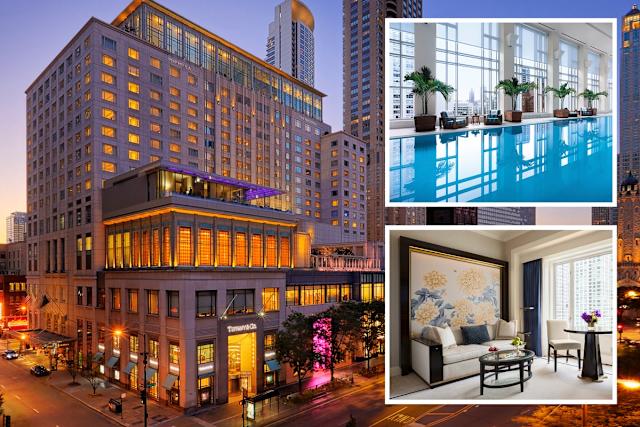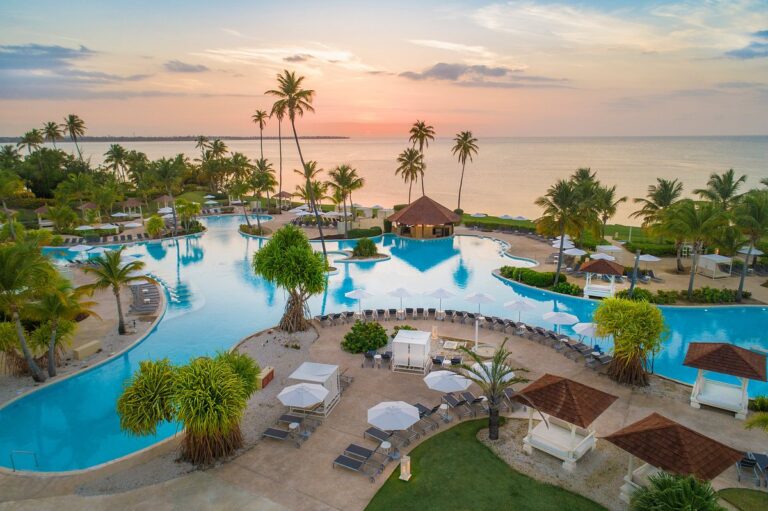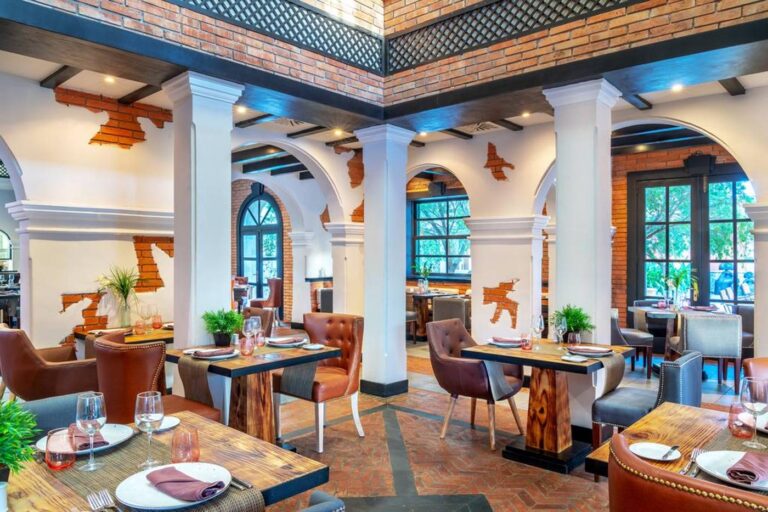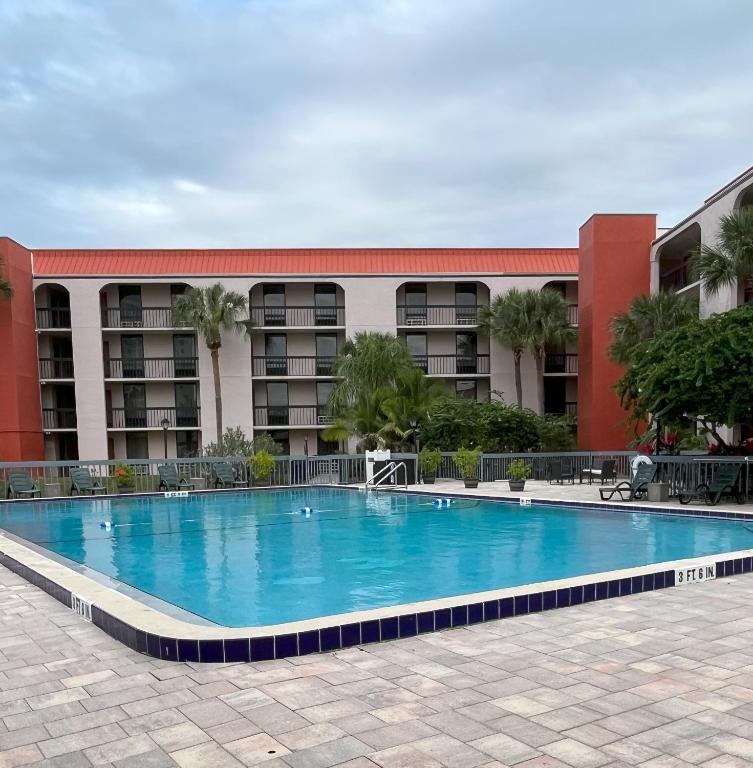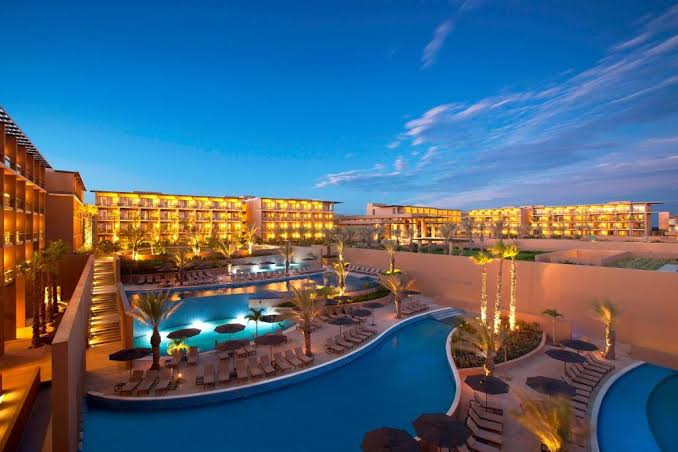The Top 16 Luxury Hotels in the U.S. That Achieved the Ultimate Accolade of Three Key Honors
The Triple Crown of Hospitality
In the world of luxury travel, a rare and distinguished honor is bestowed on only a select few: the Triple Crown of Hospitality—where a hotel achieves the highest awards in design, sustainability, and guest experience. In 2025, across the United States, sixteen hotels earned this coveted trifecta. From iconic urban landmarks to secluded desert sanctuaries, these establishments redefine what excellence means in hospitality. Join us on an immersive tour of these celebrated sanctuaries.
1. The Heritage Pavilion – Charleston, South Carolina
Located in Charleston’s historic district, The Heritage Pavilion marries antebellum grandeur with cutting‑edge eco‑tech. Its restoration of a 19th‑century cotton warehouse earned global praise for adaptive reuse. Green rooftops sparkle alongside solar panels, and guest rooms include reclaimed‑wood furnishings. The service team, trained extensively in Charleston’s Gullah‑Geechee cultural heritage, delivers exceptionally warm, authentic hospitality.
2. Scarlet Dunes Resort – Palm Springs, California
This architectural masterpiece—an all‑glass structure sprawled across Coachella Valley—secured awards for its desert‑contextual design, on‑site water‑reclamation systems, and zero‑waste restaurant. Scarlet Dunes engages guests with immersive desert‑native experiences: guided stargazing, artist‑led mural walks, and an acclaimed Indigenous culinary series. It’s immersive, luxurious, and deeply respectful of local ecosystems.
3. Blue Harbor Estate – Newport, Rhode Island
Perched on dramatic Atlantic cliffs, Blue Harbor Estate is a study in coastal refinement. The hotel earned accolades for its elegant, historically inspired design and its oyster‑reef restoration initiative—part of its Blue Harbor Foundation. Guest experience is sublime: bespoke seafront picnics, on‑board chef’s tastings, and spa treatments that integrate local sea algae, all delivered with attentive elegance.
4. Pine Crest Lodge – White Mountains, New Hampshire
Nestled in classic New England forest, this lodge captures rustic charm and modern comfort. Requiring no new deforestation during expansion and using geothermal heating, Pine Crest is both verdantly beautiful and eco‑responsible. It won tourism awards for guest guiding, with interpreters leading wildlife‑tracking and star‑gazing expeditions. Guests rave about the personal greeting by name and crisp linen breakfasts served lakeside.
5. Aurora Peaks Resort – Jackson Hole, Wyoming
A striking alpine design harnessing local timber and stone, Aurora Peaks blends grandeur with environmental sensitivity—retaining 90% of its natural tree cover and investing in wildlife‑corridor preservation. Skiing and snowshoeing excursions are led by mountain‑guide sommeliers. The resort’s signature spa uses local sage and juniper wraps. Service is dialed‑in at platinum level: every guest feels like a returning VIP.
6. Solstice Isle Retreat – Miami, Florida
This sleek resort on Biscayne Bay earned its triple honors via a luminous, light‑filled design, coral‑friendly seawall science, and a vibrant guest‑experience lineup: yacht parties at sunset, art‑deco history tours, and a dedicated “green concierge” planning zero‑emission outings. Rooms feature living‑moss walls and panoramic bay views, while restaurants harvest gulf oysters and native produce daily.
7. Great Plains Ranch House – Amarillo, Texas
A living tribute to ranching heritage, this expansive estate earned acclaim for its thoughtful design—verandas, leather‑lined interiors, and sustainable sod heating. Sustainability initiatives include regenerative grazing and solar‑powered barns. Guests can brand their own “Heritage Cattle” in an artful experience, while supper features grass‑fed beef and prickly‑pear cocktails around firepits under a star‑crowned sky.
8. Canyon Mesa Sanctuary – Sedona, Arizona
Set among red‑rock cliffs, this resort looks carved from the land—its earthen walls and antechambers glowing in sunset hues. Recognized for passive‑solar architecture, reclaimed‑water gardens, and a zero‑plastic policy, the resort also draws from local spiritual traditions: guided energy vortex hikes, reiki sessions, and storytellers in adobe‑walled lounges, all fostering thoughtful guest experiences.
9. Bay Harbor Lighthouse Inn – San Francisco, California
A landmark renovation of an Edwardian lighthouse, this inn achieved honors for interior‑maritime design, coastal‑cleanup partnerships, and a guest experience that includes behind‑the‑scenes access to the Golden Gate, private bay cruises, and oyster shucking on deck. Rooms feature floor‑to‑ceiling bay windows and vintage brass fixtures. Service is sealed with insider tips from local veteran sailors.
10. Maplewood Estate – Woodstock, Vermont
This storied country manor is a retreat defined by its craftsman touches and community‑sourced ethos. Maplewood won design awards for its reimagined stone cottages, sustainability prizes for its farm‑to‑table gardens and biomass heating, and guest‑experience praise for maple‑syrup lessons, wood‑foraging dinners, and winter sleigh rides. Every detail feels rooted and refined.
11. The Continental Opulence – Manhattan, New York
A new‑build high‑rise on 5th Avenue, The Continental redefines urban luxury. Its refined marble‑and‑oak interiors and minimalist glass façade set design standards. It operates on 100% renewable energy and recycles 95% of all waste. Service is elevated by “cultural butlers” who curate museum tours, Broadway dining, and art‑collector visits. This is city‑center sophistication with soul.
12. Starlight Bay Retreat – Napa Valley, California
Less winery, more refined hideaway—this vineyard‑edge resort is defined by low‑silo architecture and grass‑roof tasting rooms. Off‑grid solar, onsite water‑filtration, and composting define its environmentally agile ethos. Guest experiences include barrel‑side meals, grape‑harvest assistance, and personalized sommelier–winemaker sessions. Every visit feels like joining a storied winemaking family.
13. Northwoods Hideaway – Lake Superior, Michigan
Sequestered in pine forest near Lake Superior’s shore, this lodge blends rustic cabins with luxury amenities while boasting 0% new deforestation. Sustainability awards honored its fish‑habitat restoration and electric ferry shuttles. Guests canoe crystal coves, fish with local educators, and enjoy the Northern Lights from private deck hot tubs. Personalized chef‑crafted meals arrive lakeside.
14. Sequoia Sky Lodge – Humboldt County, California
Among giant redwoods, this ethereal lodge is elevated via stilts and sky‑bridges, avoiding root‑damage and minimizing footprint. It garnered design praise for airy, elevated guest cabins, and sustainability commendations for forest‑carbon credits and solar‑thermal arrays. Experiences include forest‑bathing guides, canopy yoga, and redwood‑canopy gondola rides. Overnight, guests fall asleep to owl‑calls and dew-dappled sunlight.
15. Desert Rose Chateau – Scottsdale, Arizona
A desert‑modern marvel, this resort rose from sandstone and plaster forms inspired by local geology. Recognized for bioclimatic cooling, rainwater harvesting, and drought‑tolerant landscaping, its guest experiences include sunrise hot air‑ballooning, desert‑art workshops, and intimate courtyard soirees. The “Rose Ritual”—a rose‑water spa journey—has become legendary for its sense of place.
16. Olympia Bay Retreat – Seattle, Washington
Built on pilings over Puget Sound, Olympia Bay Retreat is a testament to water‑centric design. Cantilevered dining pavilions and glass‑floored sauna cabins earned design awards; tidal‑energy turbines and rainwater gardens earned sustainability honors. Guests board electric launches for whale watching, explore local First Nations art installations, and unwind in cedar hot tubs overlooking orca‑frequented waters.
How the Triple Honors Are Earned
These 16 hotels didn’t receive their accolades lightly. Each underwent rigorous independent evaluation from the Council of Global Hospitality (CGH), based on three pillars:
-
Design Excellence: Architecture and interiors judged for site appropriateness, innovation, aesthetics, and materials.
-
Environmental Leadership: Scored on energy/water use, land stewardship, waste reduction, local‑ecosystem integration, and social responsibility.
-
Guest Experience & Cultural Engagement: Reviewed via guest surveys, mystery‑guest visits, and community‐engagement programming.
Meeting all three criteria—each weighty in its own right—irrefutably proves a hotel’s commitment to excellence, integrity, and story‑driven hospitality.
What Guests Are Saying
From coast to coast, travelers are transforming theory into experience:
-
Guests at Blue Harbor Estate describe it as “where salt‑air romance meets real ocean‑restoration work,” and note the dining “feels bespoke, purposeful, and deeply local.”
-
At Canyon Mesa Sanctuary, one visitor called their stay “a spiritual reset—ancient red rocks, regenerative gardens, and sincere meditation guides who helped me reconnect to the earth.”
-
In Miami, guests of Solstice Isle Retreat rave that “the light‑driven design makes sunrise feel like a daily gift—and the yacht dinners aren’t over‑the‑top glitz, but thoroughly social and authentic.”
-
A guest at The Continental Opulence in Manhattan observed: “It’s rare in the city to find thoughtful silence, curated art, and staff who know your book‑and-journal preferences. It’s exactly what I didn’t know I was craving.”
Geography of Excellence: U.S. Luxury
This curated list reveals interesting patterns:
-
Coast & Sea: From Rhode Island to California, ocean‑adjacent retreats lead in coastal design and restoration—balancing aesthetics with ecological purpose.
-
Desert & Mountain: Arizona, California, Wyoming, and New Hampshire offer immersive escapes where luxury aligns with solitude and nature.
-
Urban Centers: Manhattan and Miami prove that city hotels can still deliver meaningful sustainability and design leadership—especially when anchored in cultural narrative.
-
Deep Nature: With sanctuaries in the White Mountains, Lake Superior, and Puget Sound, we see a trend toward destination escapes focused on emotional well‑being.
Why 2025 Was the Year of the Triple Crown
Several converging forces made 2025 the watershed year:
• Heightened Environmental Scrutiny
Following dramatic wildfire years (2020–2024), both public and industry demand sustainable operations. Hotels that could demonstrate real, measurable impact—reduced emissions, restored habitats, circular economies—earned priority.
• Guest Values Shift
Post‑pandemic travelers no longer see luxury as merely opulence—they want purpose, authenticity, and alignment with personal values. Personal storytelling, cultural sensitivity, and local validation are non‑negotiable.
• Design as Experience
Hotel attunement to locale—from desert geometry to forest materials—matters more than ever. Guests expect spaces to feel like “they belong,” co‑created by site, architect, and community, not imposed by generic brand templates.
• Tech + Tradition
Digital booked-in innovations—smart energy, keyless entry, augmented‑reality history tours—now coexist with hospitality rituals. Success belongs to hotels that meld convenience with heart, maintaining human touchpoints.
How to Experience the Triple Crown
If you’re planning your next luxury trip, here’s what to look for—and book:
-
Balance design with stewardship: Sustainable hotels aren’t service‑deficient. Look for partners who shine in architecture and eco‑leadership.
-
Prioritize immersive programming: Experience‑led stays—like ranch stays, desert pilgrimages, chef‑assisted harvests—create long‑lasting memories.
-
Ask for details: Don’t settle for “green marketing.” Demand numbers: carbon offsets, energy rating, water savings.
-
Check that third pillar: Reviews and surveys matter. Were guests treated consistently, with cultural respect? Did local communities speak well of the hotel?
Glimpsing the Future of Luxury Stays
Drawing from these 16 stalwarts, expect four major trends to shape next‑generation hospitality:
-
Regenerative Design – Not just low‑impact, but actively ecosystem‑restoring—hotels that heal the land.
-
Hyper‑Local Storytelling – Part hotel, part cultural incubator: artist residencies, land‑steward hosts, indigenous‑curated programming.
-
Wellness Integration – Beyond spa: mental health retreats, digital detox, nature therapy as staples.
-
Climate‑Resilient Infrastructure – Buildings that anticipate wildfire, flood, extreme heat. Design meets disaster planning.
Final Thoughts
The 16 U.S. hotels that earned the prestigious Triple Crown of Hospitality in 2025 are more than temporary retreats—they are living, breathing expressions of a new luxury ethos. One where beauty, responsibility, and hospitality converge; where design serves narrative, sustainability fosters regeneration, and guest experience is cultural, not just comfortable.
These properties weave storylines into stays—whether that means starlit desert dinners, redwood canopy meditations, or moonlit sea voyages. They prove that discerning travelers today seek more than plush pillows: they want to wake up changed—by place, purpose, and genuine human connection.
In celebrating these 16 hotels, we celebrate a turning point: luxury redefined not by extravagance alone, but by depth, context, and the gentle impact we leave behind. If you’re planning a future escape, let your journey be measured not only in stars—but in stories, stewardship, and soul.

